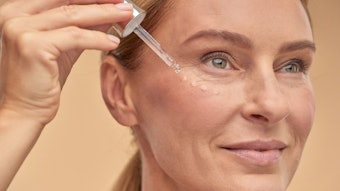
The skin's bacterial ecosystem is delicate and diverse—and has the potential to become unbalanced through the use of cosmetic actives. New findings from Givaudan Active Beauty characterize the skin microbiota at various body sites to allow the impact of these ingredients to be assessed. The company hopes to use collected data to conceive new actives.
An ongoing global program, the research focused on five zones of the body with differing sebum content: the forehead, nose, cheek, forearm and calf.
Related: Naturex and Givaudan to Unveil New Products at in-cosmetics Global 2019
Givaudan researchers analyzed samples of each zone collected via cotton-swabbing from more than 70 healthy women. Samples were accompanied by their appropriated biometrics—pH, transepidermal water loss, hydration and sebum output—in order to ultimately obtain metagenomic DNA, a multi-origin mixture that represents the DNA of the complete population.
A small fragment of the metagenomic DNA molecule was then sequenced by a Toulouse-based platform and analyzed to find the average microbiota composition for each of the aforementioned zones.
"We demonstrated with this new study that a better understanding of the links between skin and microbiota composition would help to address the impact of active cosmetic ingredients on the skin microbiota from a subset of characterized (sic) volunteers," said Patrick Robe, project manager, Metagenomics, in a press release.
The company's 2020 strategy is to introduce customers to more health and wellness solutions; these findings are in line with that goal. The research was presented at the 30th IFSCC Congress in Munich, held from Sept. 18-21, 2018.










